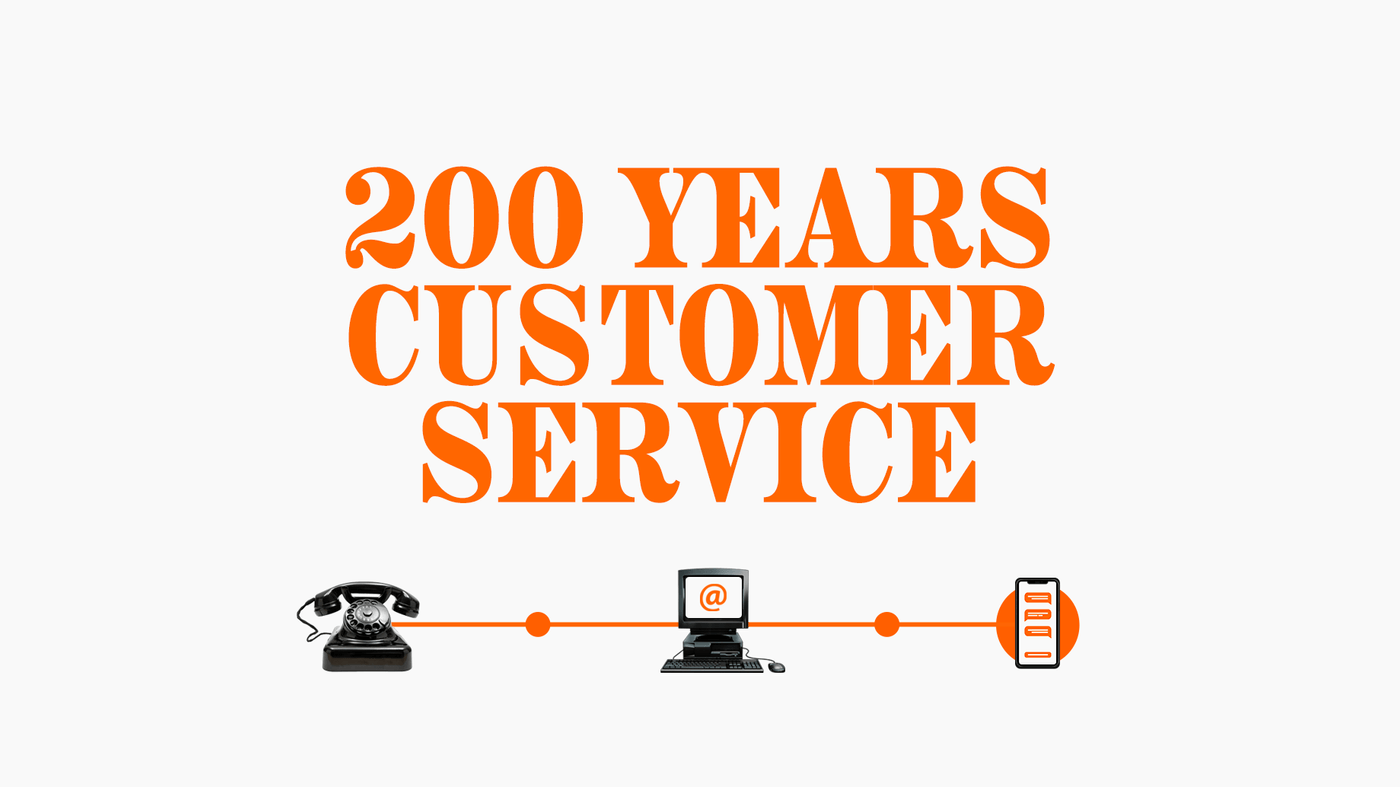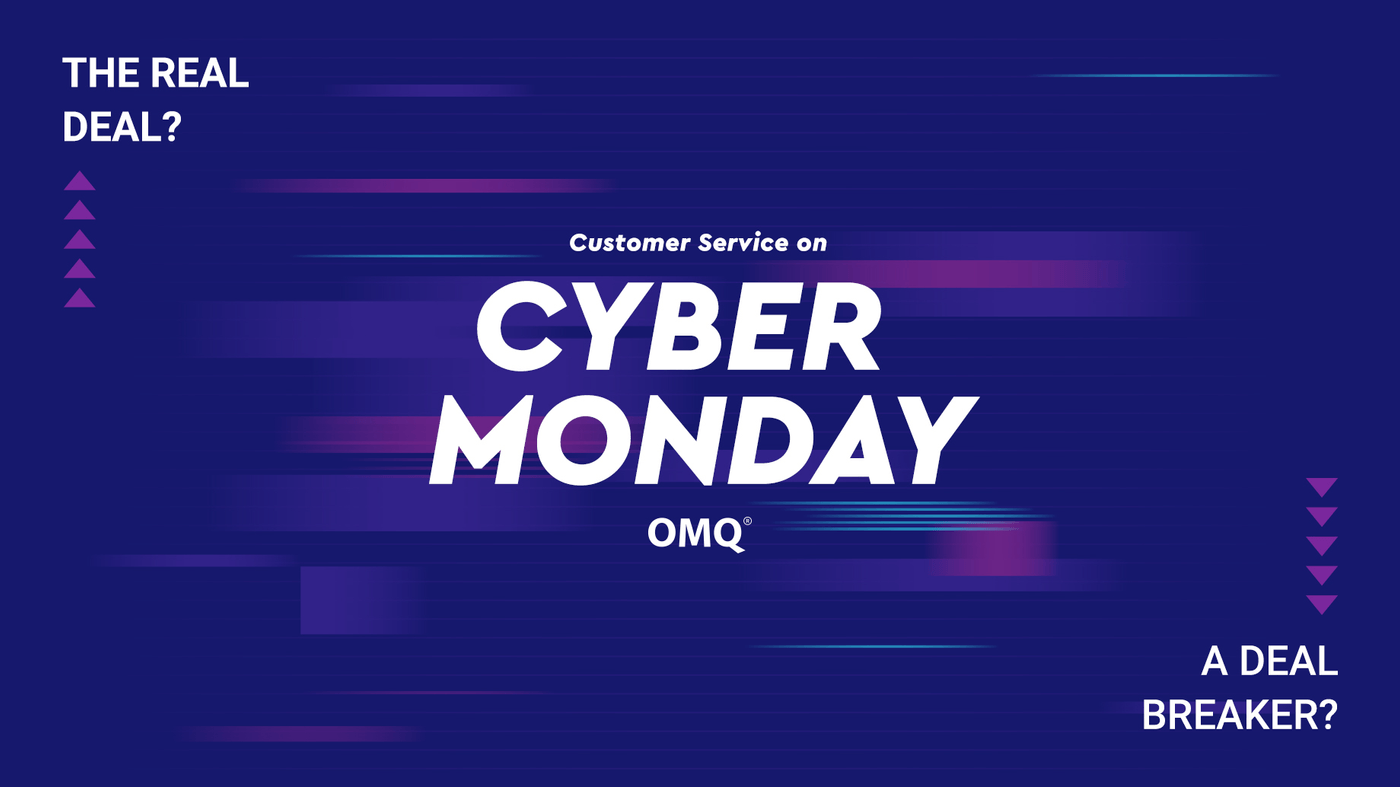News
How Customer Service Has Changed Over The Last 200 Years
In this brief about the evolution of Customer Service in the last 200 years, we give insight on the most popular communication channels together with some lessons learned in the way about customer relations and behaviour.

Today we would like to celebrate the end of the first year of the new decade. We survived the 2012 prediction of the world ending (remember that?) and we are growing ever stronger and wiser with every situation the world is throwing at us this year. We are more excited about tomorrow’s new technological advance. But how is this journey reflected on customer service? What have we learned and where do we go from here on?
This article will give a quick run down through the history of customer service communication channels, which trends are leading the industry and what that might bring in the future.
How did we get here?
Let’s start by celebrating roughly 200 years of needing customer service. We are grateful to the pioneers, but we should also be glad that we have come such a long way.
Between 1760 and 1840 the First Industrial Revolution took place, factory buildings were raised, machines were installed and products were made at a speed and volume never seen before, however customer service was still a person thing: long walks to the factory and hand or machine written letters to make a complaint were not only common but the only way to get customer support. That was until the end of the 19th century, when the phone was invented and made available by Alexander Graham Bell with his patent. Later on switchboards were developed. No more walks!

It took approximately 50 years for the next big step in customer service to be developed: Call centers and toll-free numbers. Which are pretty much the customer service equivalent of mass production, and they are still standing throughout time. All thought it keeps customer service as human to human interaction, it can also be taxing for the agents. Even with the introduction of Interactive Voice Responses in the 1980s IVR, much of the work is done by agents, and outsourcing became a common practice used to this day, especially to India, Philippines and Latin America.
Welcome to the internet
The 90s were a game changer for communication channels, marketing and customer service. The World Wide Web made everything more available, and communication more immediate. Here a few things that brought the internet:
- E-mails
- Company Website
- Help pages
- Helpdesk
- Live Chat

Customer service went from direct contact to a more distant relationship between the company and its customers, and this way of contact lasted for a while. The glorious 2000s brought innovation, growth and launched brand-new approaches to customer service. Both companies and customers opened the doors -more like windows in this case- to embrace a fresh way to interact with each other: Social media.
Platforms like Twitter and Facebook created bigger challenges when it came to business to customer interaction. Now, with the new tools, customers were able to be more vocal, write public reviews and have direct contact with companies, who were not experienced at all with these types of interactions. The direct contact created the need to answer any request immediately through these platforms. Additionally, the new reviews are more important than ever. This evolution brought with it the reshaping of marketing and customer service, as well as new communication channels that made the direct relationship better and more efficient.
Additionally, since 2010 tech support has been able to do remote maintenance to PCs with tools such as TeamViewer. This means direct interactions with customers that offer faster solutions and easier procedures for both the customer and the agent.
This is the end… you thought!
“What now?” Throughout the years, customer behavior has changed. Their demands become more pressuring, especially when it comes to timeliness of an answer and the company’s availability on the customer service channels. Before people had to go to libraries to get information, and to the stores if they needed something concerning a product. It was harder and took more time, however with the introduction of the internet, information became available with just a click, and people like it that way. It makes everything so much easier.

Chatbots have become really popular. Especially since the introduction of smartphones, because of 24/7 availability and fast reaction time, which follows the trends of customer behaviour. Chatbots and the technology behind them were long introduced, but it is gaining relevance once again. The great advantage they bring to companies is its diversification when it comes to what type of interactions to implement according to their needs, whether that be multiple choice or Natural Language Processing. And it is not just the chat feature what makes this channel a customer and company favourite, but also the addition of pairing it with Artificial Intelligence.
AI has also been around for some time, and by applying it in a customer service channel, it allows the conversation to run smoothly.
Next stop: Automation of the service channels
Some companies are already integrating AI to all customer service channels, automating processes in all communication channels and lessening the workload for the agents. They even have launches their own personalize-able chatbot, such as this one, who can have small talk, give a small repertoire of jokes as well as give and receive specific information. It does this through a series of questions that compile the relevant information about the customer concern, and then gives information back: whether it be in a link, images, individual messages, or even trigger a background action like changing an address.

19th century - 20th century - 21st century … and then?
200 years have passed since the first call for customer service and so much has changed. Technological advances and the development of new tools have been the reason for the improvements in customer service. As of now, we are just at the beginning of the decade, and we already foresee so much growth and developments. We are on the way of polishing NLP and AI, so that for example Chatbots can be used to their maximal performance.
These 200 years have taught us how to properly serve and support customers, take care of the relationship and build a customer service, with the focus on the service efficiency. It showed companies that quality in their product or services is important, but it should be backed by a strong support team and a striking approach. Currently, this means to focus on automation of communication channels and the introduction of new one, such as chatbots. Now, we are just left to wonder what customer service will look like 200 years from now. Maybe this article will be in history books by then - who knows? ;)


